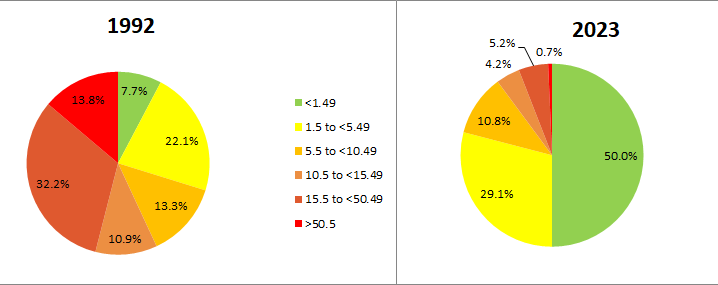| Home |
| Water System |
| Sewer System |
| Harbor and Bay |
| School Program |
| About MWRA |
| Doing Business with MWRA |
| Contact MWRA |
Drinking Water Lead Test Results
Massachusetts Water Resources Authority
|
To monitor lead levels, MWRA and your local water department test tap water in up to twenty-five homes in each community.
Lead results for the entire system and for each community are compiled by MWRA, with an average of 440 samples taken for the entire system. The regulations require that a system our size – serving over 2 million people – take only 100 samples. New York City, with around 5 times as many customers, takes only 100 samples.
We have agreed with our state regulators at the Department of Environmental Protection to uniformly sample more than 4 times as many homes across the service area to get a better idea of how our corrosion control treatment is working.
But not just any homes are sampled. Under Environmental Protection Agency regulations, homes that are likely to have high lead levels - usually older homes likely to have lead service lines or lead solder – must be tested. Also, only first flush samples, water most likely to have lead, are sampled. The EPA rule requires that 90% of these sampled homes must have lead levels below the Action Level of 15 parts per billion (ppb).
Lead levels in sampled high-risk homes have dropped steadily since 1992, with the average dropping nearly 90%. Also, the proportion of samples has also changed over time.
Lead Levels in Sampled Highest Risk Homes Have Dropped Steadily Since 1992 |
|---|
As the pie charts above show, the number of worst case homes that have lead levels that are less than 1 ppb and 5 ppb has increased dramatically, as well over 80% of the samples are now less than 5 ppb.
If you have questions or would like more information about lead in drinking water, please call our Water Quality Hotline: 617-242-5323, or email Beverly Anderson, Project Manager, Public Health.
Go to a detailed presentation on the history of the decline of lead in tap water.
Updated December 13, 2023 12:44 PM
